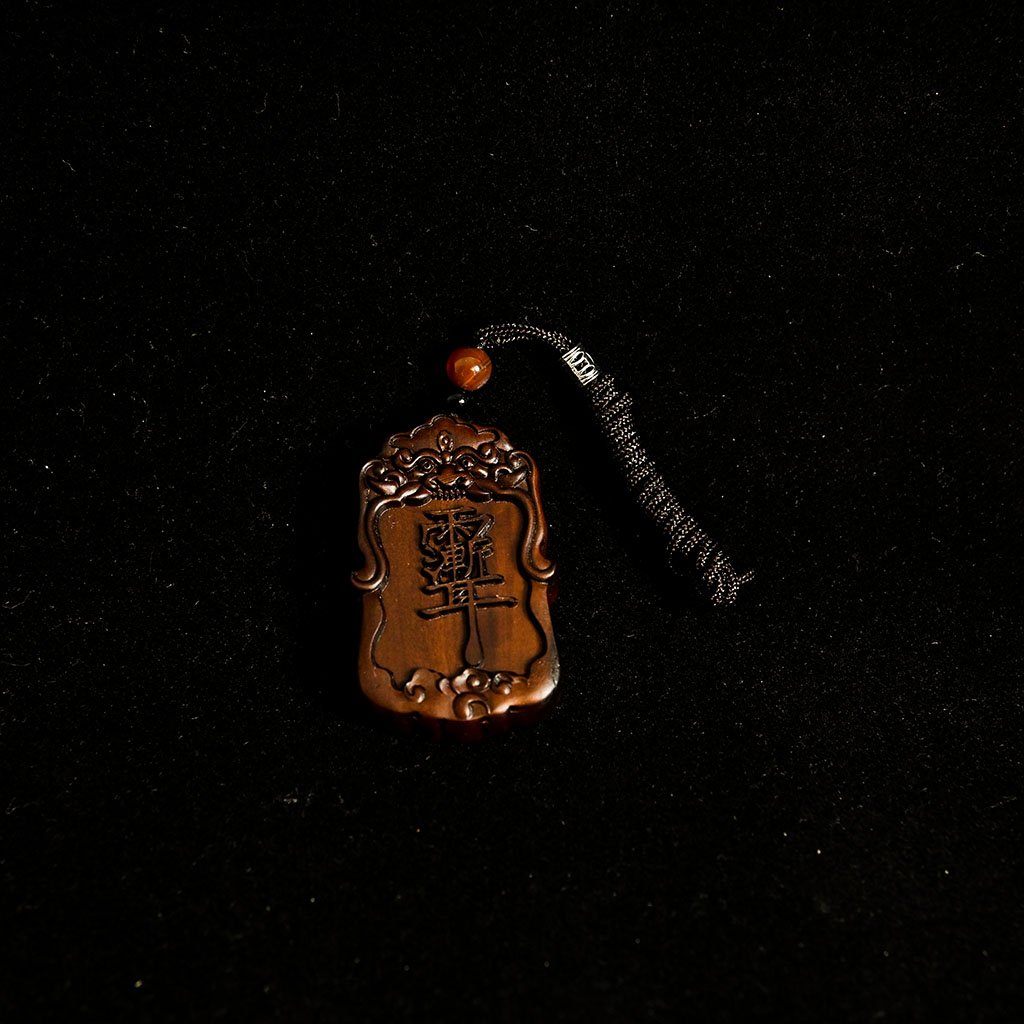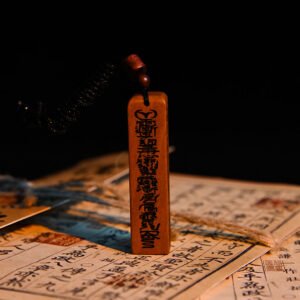Zi Wei Hui & Lei Zu Hui Pendant
I: Symbolism of the“Zi Wei Hui”(紫微讳)
1. What is Zi Wei Hui?
A sacred symbol in Taoism, linked to the Great Emperor of the North Star (Zi Wei Emperor), a high-ranking deity who governs the stars and destiny.
Used in rituals, charms, and Taoist magic for protection, blessings, and expelling evil spirits.
2. Meaning & Purpose
Divine Authority: Represents the power of the Zi Wei Emperor, symbolizing cosmic order and heavenly rule.
Protection: Written on talismans or amulets to ward off bad luck and attract good fortune.
Religious Rituals: Taoist priests use it in ceremonies to communicate with deities.s
3. Symbol Appearance
A stylized combination of ancient Chinese characters (sometimes resembling “雷” or “敕”), often seen in red ink or carved on seals.
Its complex form reflects its sacred nature—believed to hold spiritual energy.
4. Cultural Connections
Related to Chinese astrology (e.g., the “Zi Wei Star” in fortune-telling).
Seen in Taoist art, temple decorations, and religious objects.
5. Precautions
Unlike common words, Zi Wei Hui is a mystical symbol—its power comes from ritual use, not just its shape.
Similar to how crosses or mandalas function in other religions, but unique to Taoist traditions.
II: Symbolism of the“Lei Zu Hui”(雷祖讳)
1. Basic Meaning
“雷祖” (Léi Zǔ) refers to the Taoist deity “九天应元雷声普化天尊” (The Heavenly Lord of Universal Thunderclap Response)—the supreme god of thunder, who governs lightning, punishes evil, and upholds cosmic justice.
“雷祖讳” (Léi Zǔ Huì) is a sacred Taoist symbol representing the divine authority of the Thunder God, commonly used in rituals, talismans, and magic tools.
2. Symbolic Significance
Divine Justice – Thunder in Taoism represents heavenly judgment. The Léi Zǔ Huì is used to expel evil, slay demons, and punish wrongdoing.
Storm and Rain Control – Taoist priests write this symbol in rituals to summon rain during droughts or calm natural disasters.
Protection from Evil – Many believe wearing or displaying Léi Zǔ Huì can ward off malicious spirits and misfortune.
3. Symbol Design
Typically combines the “rain” radical (雨) (symbolizing thunder) with overlapping ancient characters (e.g., “霆” or “敕”), forming a complex and powerful pattern.
The exact writing varies by Taoist tradition and is considered esoteric knowledge, passed down only to initiated disciples.
4. Cultural Connections
Closely linked to “Thunder Magic” (雷法 Léi Fǎ), a branch of Taoist mystical arts.
Comparable to “Zeus’s lightning” in Greek mythology but emphasizes moral justice and natural balance rather than mere destructive power.
Precautions (For Foreigners)
Sacred & Ritualistic – Unlike decorative symbols, Léi Zǔ Huì holds spiritual power in Taoism and should not be casually drawn or misused.
Not a General Good Luck Charm – It is primarily used in religious rituals rather than everyday decoration.
Different from Folk Art – Some artistic versions exist, but the authentic symbol is reserved for Taoist ceremonies.











Reviews
There are no reviews yet.